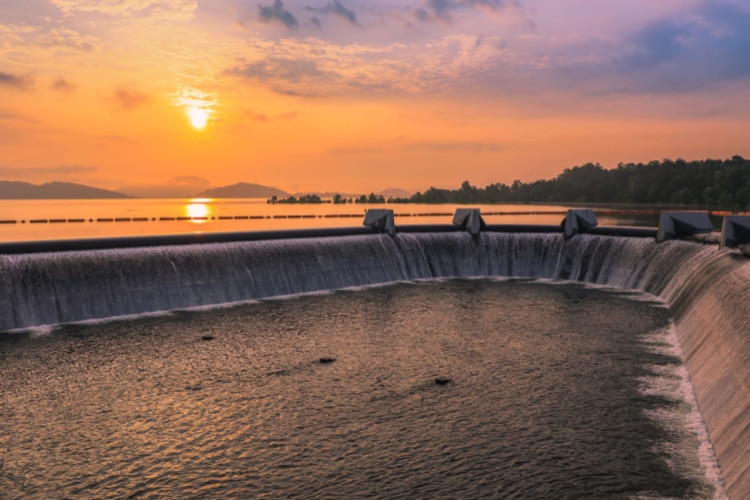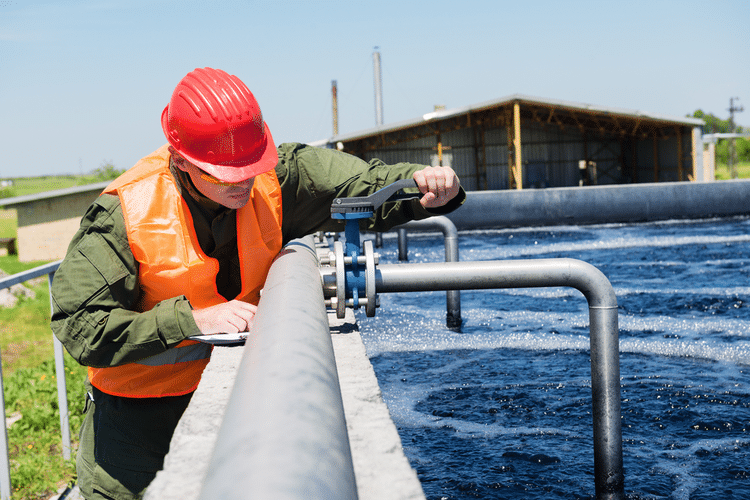New York City spends billions of its tax dollars to ensure the Big Apple has safe drinking water straight from the tap.
In fact, New York City’s tap water routinely wins annual awards for both taste and quality. For a city its size, winning awards is worth boasting about.
But how does New York City create safe drinking water for its residents and tourists each year? Let’s find out.
NYC Water Quality Report: What is in the Water?
| Contaminant | NYC levels | EPA action limit | EPA’s public health goal |
|---|---|---|---|
| Lead | 0 to 6 ppb | 15 ppb | Zero |
| Copper | 0 to 54 ppb | 1,300 pbb | 300 ppb |
| Fluoride | 0 to 0.7 ppm | 2 ppm | 1 ppm |
| Chloramines | 0 to 4 ppm | 4 ppm | 4 ppm |
| Total trihalomethanes | 4 to 72 ppb | 80 ppb | Zero |
| Arsenic | Zero | 10 ppb | 0.004 ppb |
New York City brags about supplying “some of the best tap water in the world.” The city officials provide an annual report on the contaminants and treatment processes.
The report also details minerals detected during their annual testing. Many of the minerals detected are naturally occurring elements such as bromide, chloride, iron, manganese, sodium, sulfate, and zinc.
Other elements appear to occur due to the erosion of natural deposits like aluminum, calcium, chromium, lithium, nickel, and potassium.
Fortunately, the contaminants detected in the NYC water supply are not harmful or at high levels to cause harm.
But what about lead? Is New York City’s tap water contaminated with lead? Fortunately, no. The city’s main water supply comes from upstate, where very little lead (0 to 6 parts per billion) has been measured.
However, due to the city’s aging infrastructure and water supply lines, your individual home tap water may be impacted by lead. This is due to contamination from your water pipes and not the water supply itself.
That being established, the 0 to 6 ppb of lead found in the NYC tap water is no cause for alarm as it’s below the action limit of 15 ppb set by the Environmental Protection Agency (EPA).
Is The Water Hard or Soft?
According to New York City’s Drinking Water Supply Quality Report, the water in NYC is considered soft. Their data shows that the water has 2 grains of CaCO3, or calcium carbonate, per gallon of water.
Any water with up to 3 grains per gallon is considered soft. Water that has 3 to 7 grains is considered medium, and anything above 7 is classed as hard.
The city also claims to have an average hardness rate of 1.8 grains per gallon with hardness rates reaching up to 7 grains per gallon in the Catskill-Delaware region where water supplies are blended.
You will have soft water in many parts of the city, but be aware water hardness varies. Like with lead contaminants, the best way to deal with hard water is to use a home water filtration system.
Where Does NYC Get its Water From?

New York City mainly receives its water from the 19 reservoirs and three controlled lakes of a 2,000-square-mile watershed in the Catskill Mountains and Hudson Valley. But the water is also collected from the Croton Water Supply System and the Groundwater Supply System in Queens.
It is in this region where the water supply is collected, treated, and dispersed to 8.5 million city residents daily. Over a million residents in nearby Westchester, Putnam, Orange, and Ulster counties also receive water from New York City.
How is Tap Water Treated in NYC?

Tap water in New York City receives treatment through the city’s 14 wastewater treatment facilities that work around the clock to deliver 1.3 billion gallons of water daily to the residents, tourists, and visitors of the city.
The process starts with wastewater flowing into one of these facilities where debris is removed and taken to landfills and other trash facilities. From there, the water receives further screening to remove smaller contaminants before being pumped to the facility’s surface.
The wastewater then enters tanks where the surface receives further skimming to remove contaminants like plastic and grease. Other potentially harmful impurities such as organic solids sink to the bottom of the wastewater treatment tanks for removal.
Air is added to the cleaner water to allow microorganisms to consume any remaining organic materials in the water.
This water then travels to another set of tanks. A thick sludge settles to the bottom of the water tanks where aeration continues. Water workers add sodium hypochlorite to help disinfect the water and remove any remaining contaminants that can make a person sick.
Following the treatment, the water is released as the clean water that anyone can drink, straight from the taps.
Do They Have the Cleanest Tap Water?
While not the cleanest tap water in the United States or the world, New York City does feature high on the list of Cleanest Tap Water in the United States due to the investment the city has made to keep their drinking water clean.
Conclusion
Despite New York City’s population density and aging infrastructure, it is home to one of the best tap water sources in the United States. The continuous work to ensure taste, quality, and safety is why New York City’s water supply receives high marks.
Thanks to city efforts, millions of New Yorkers and tourists can safely drink the water without fear of contaminants. Drawing from 19 reservoirs and cleaned by the 14 treatment plants, New York City residents can drink knowing the water they consume will not hurt them. Now that is something to drink to!